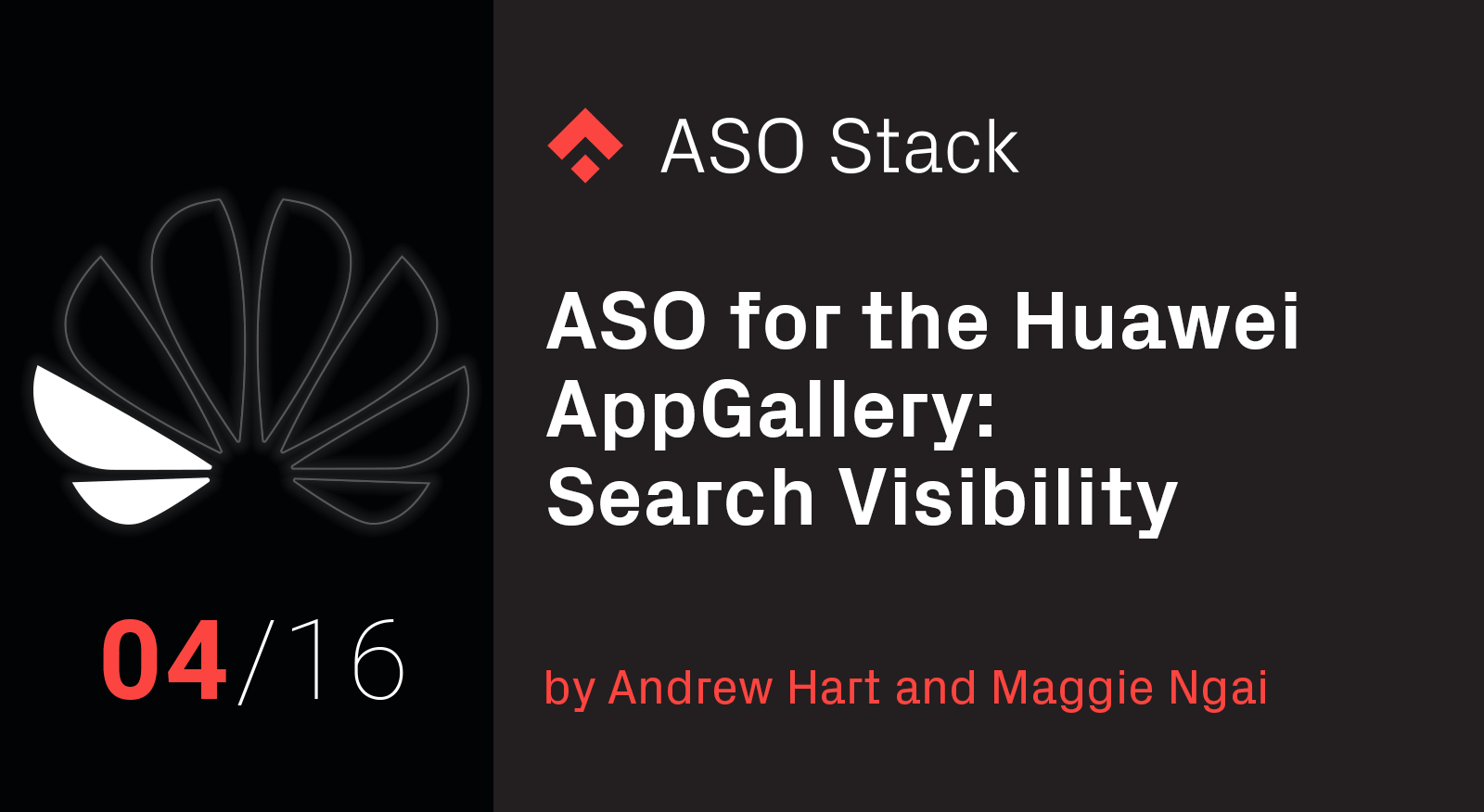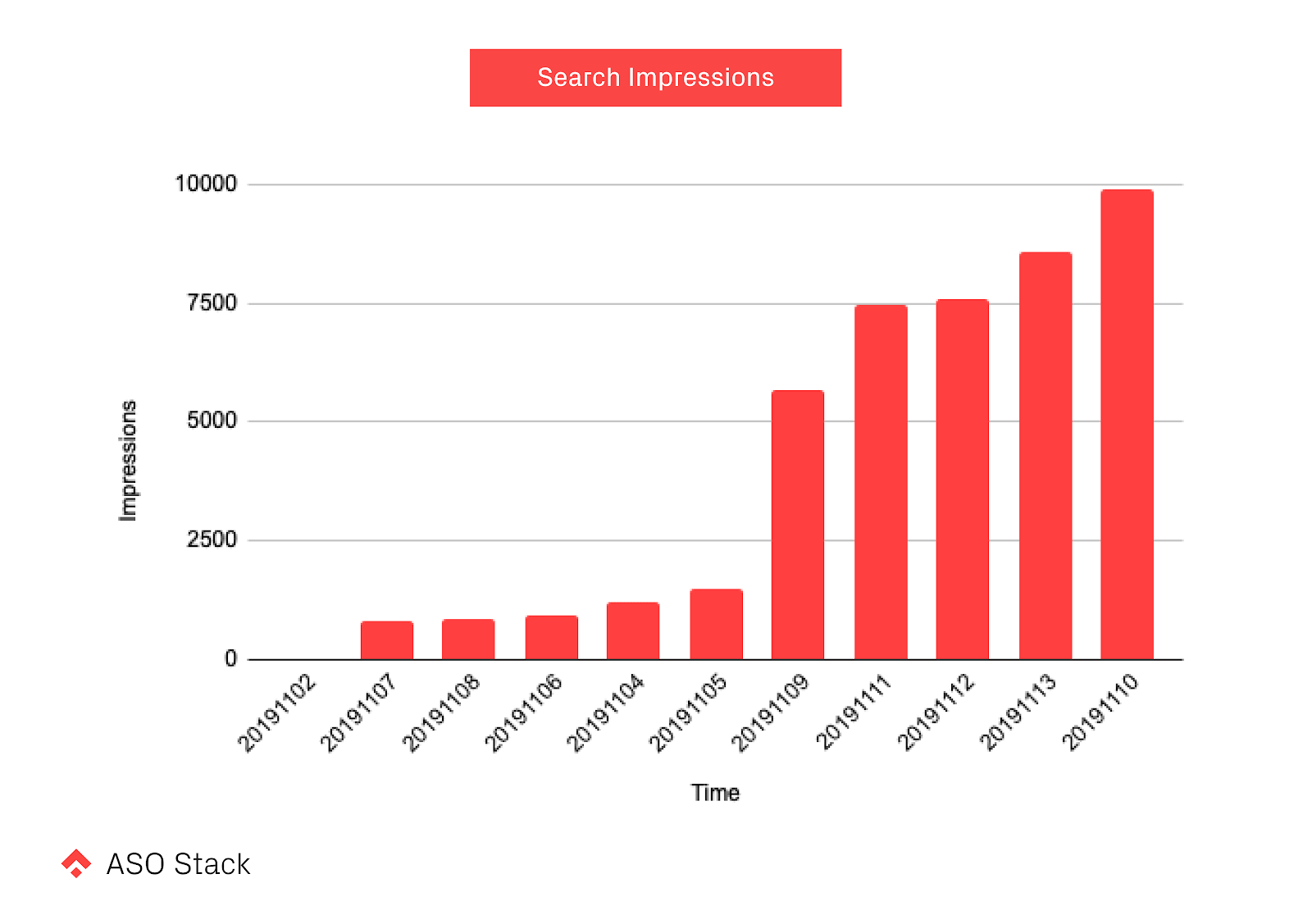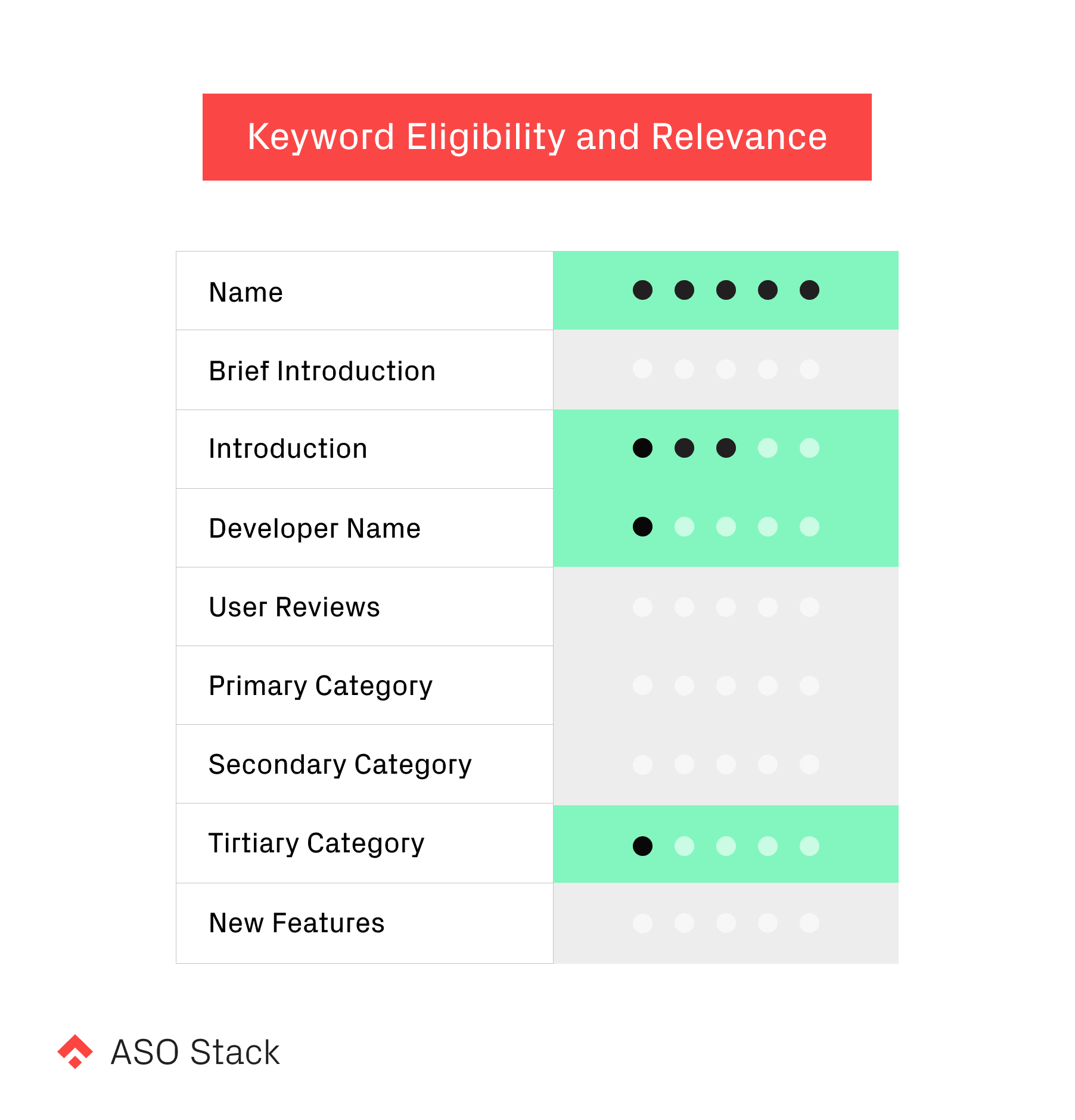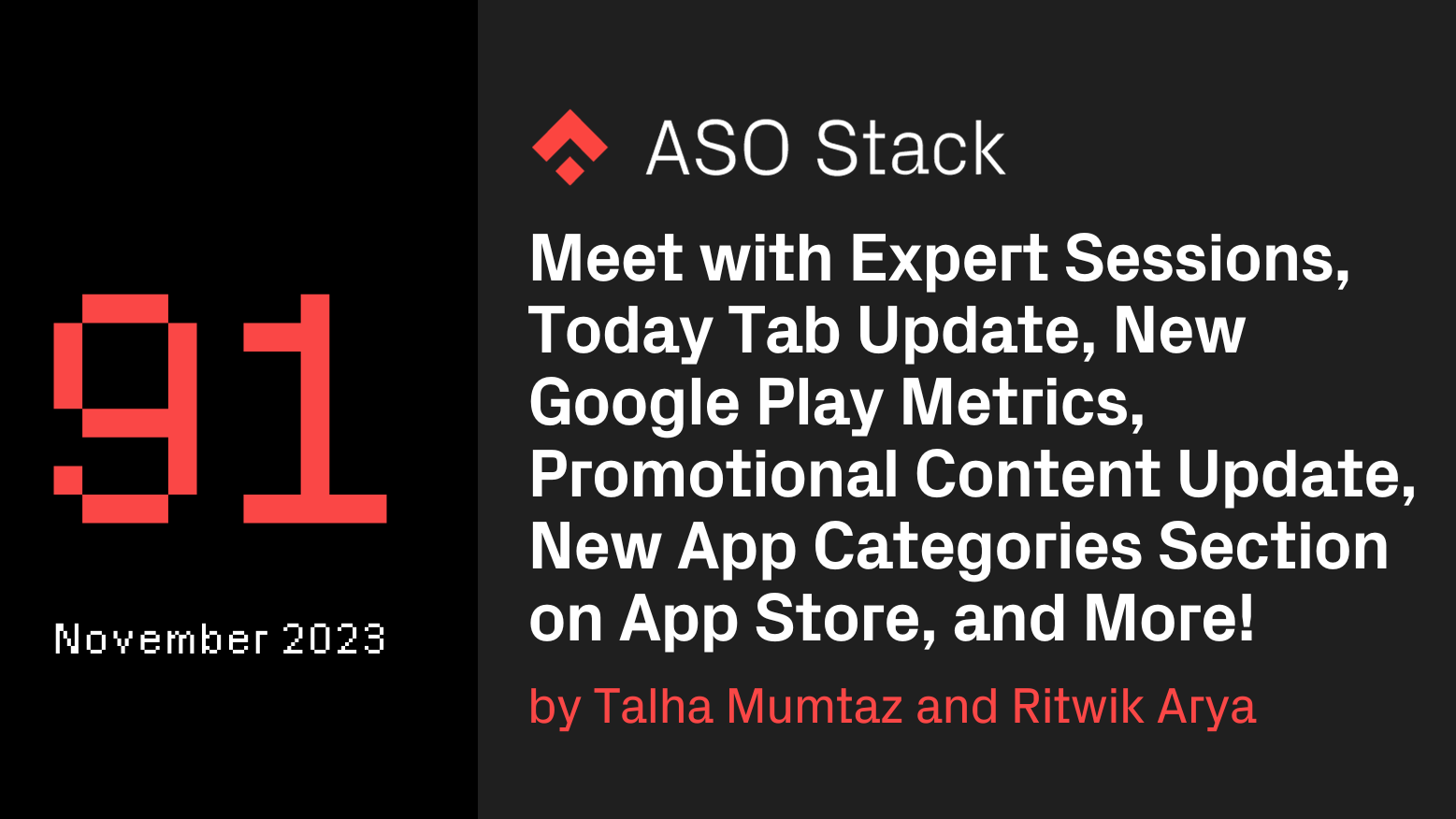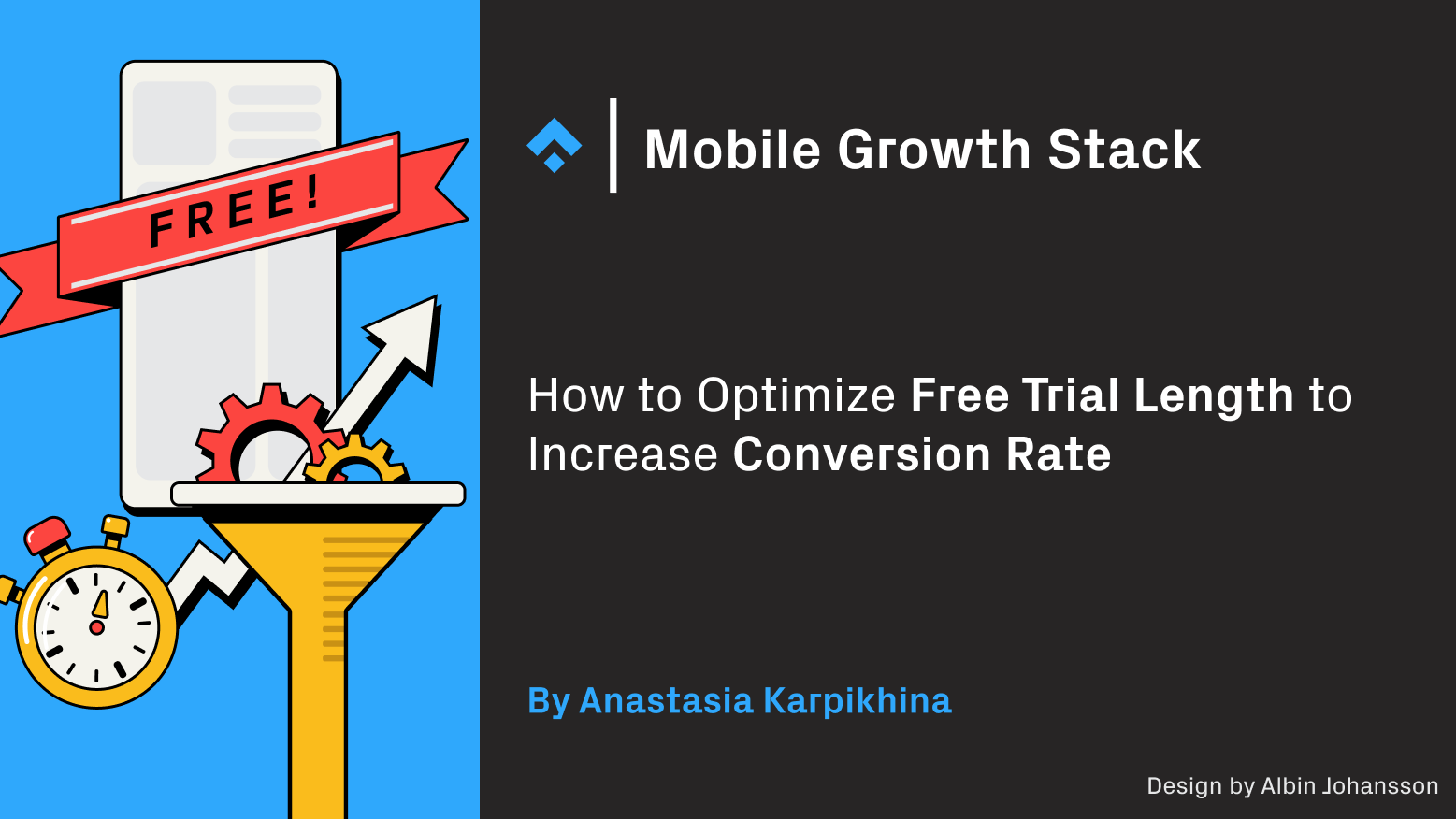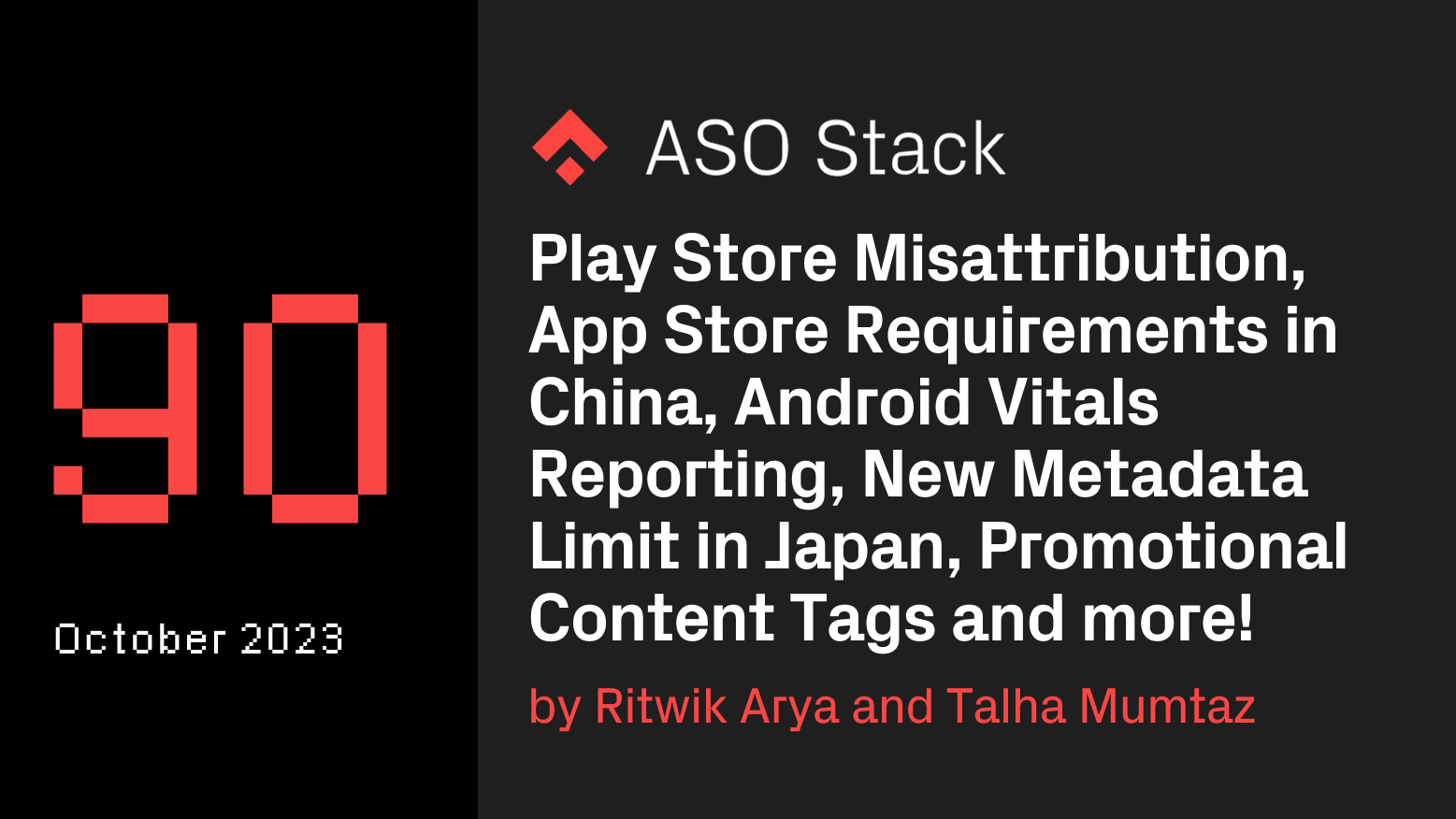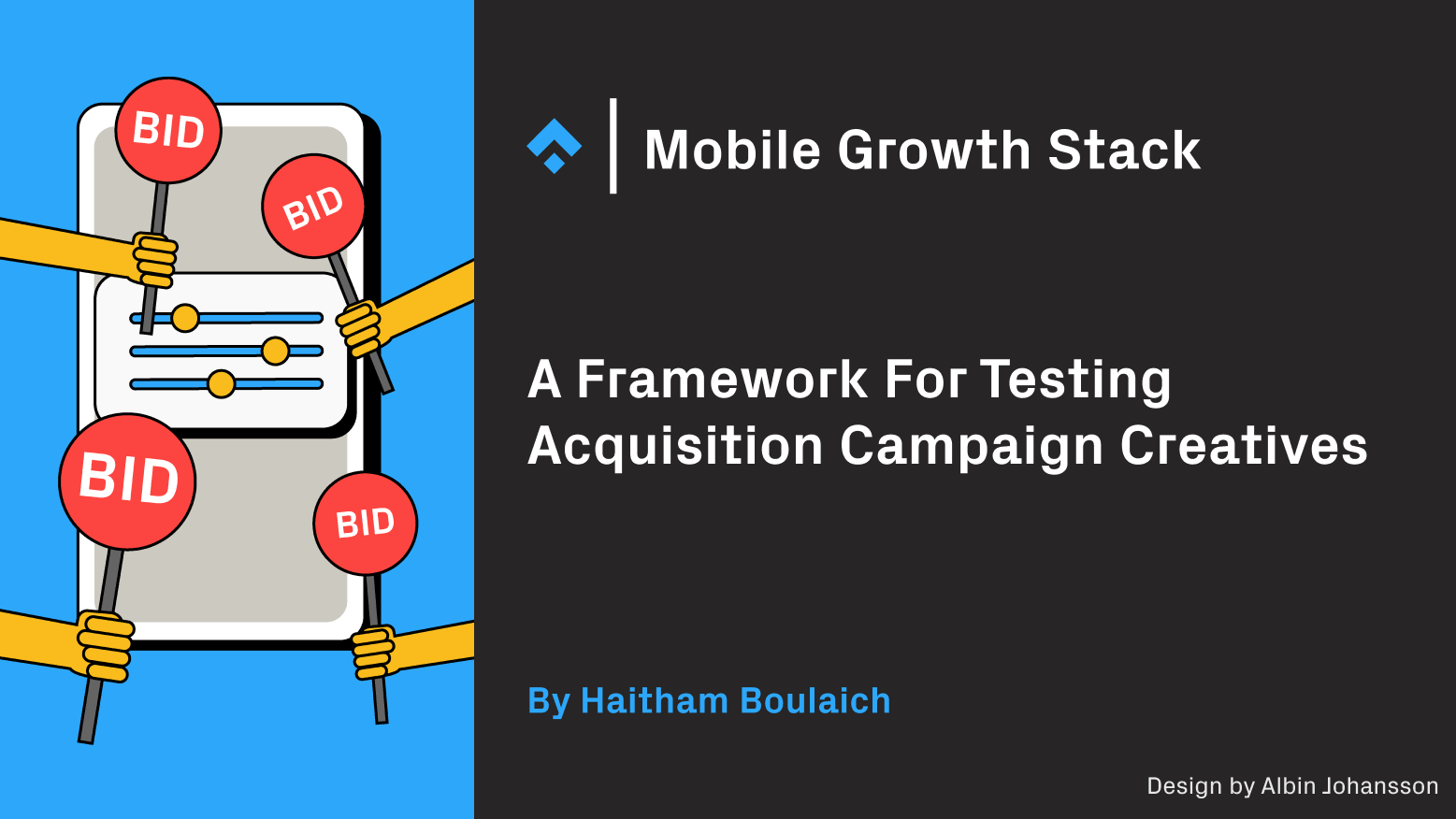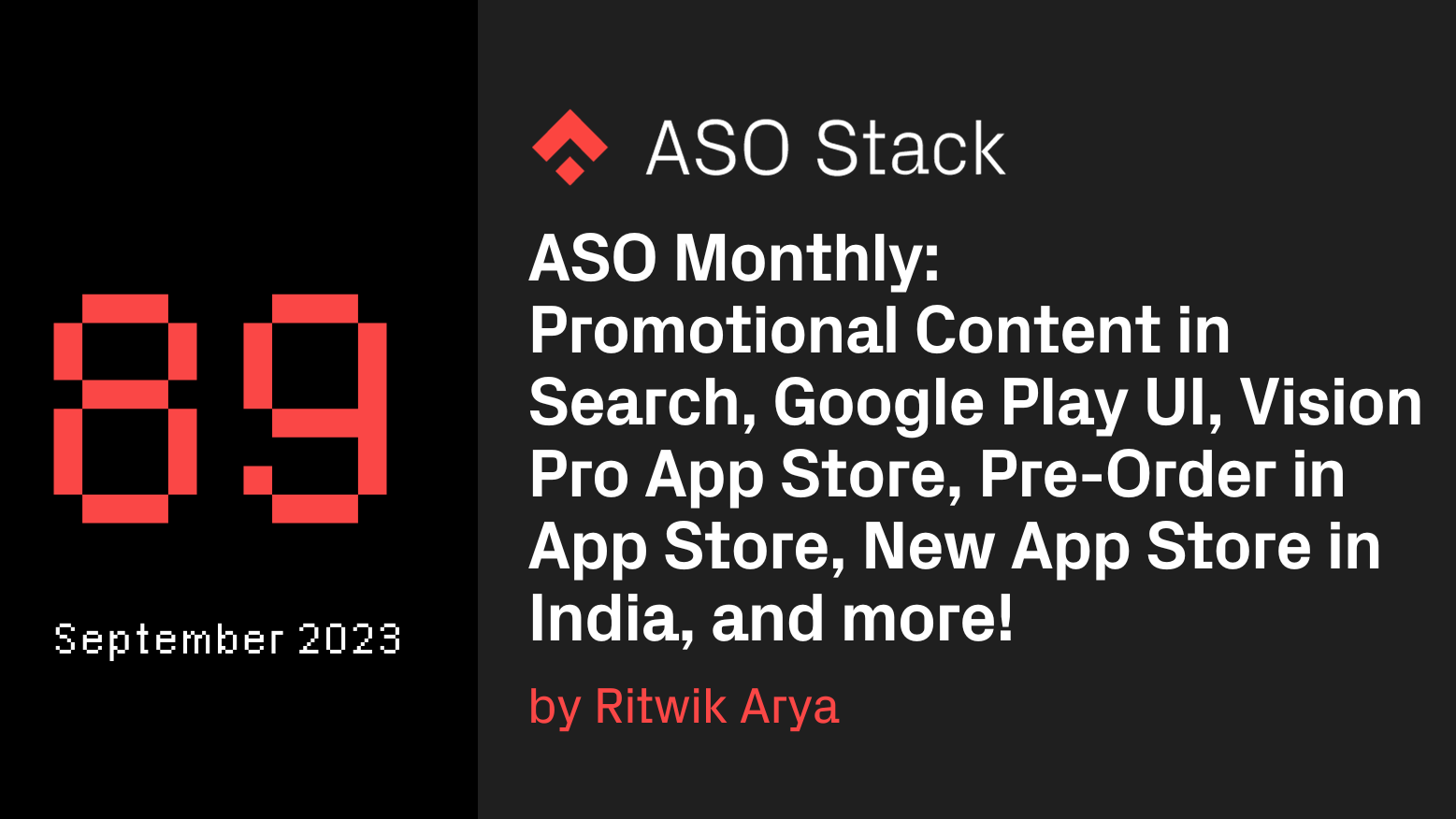How does the AppGallery index and rank apps in its search results? What ASO efforts can we employ to increase visibility and how do these differ from those of the App and Play stores?
NB: Phiture is hiring for a key role to lead our evergrowing ASO team. You’ll be responsible for leading and overseeing the success of our App Store Optimization service team and help Phiture to lead the way in mobile growth. Read more about the role here
Search Visibility is the fourth topic in our series on App Store Optimization in Huawei’s AppGallery. In the series so far, we’ve looked at the Why Should We Care?, An Introduction as well as The Huawei Developer Console.
In this article, we’ll take a look at the metadata contributing to an app’s search ranking as well as what’s indexed and what we did to get our humble app featured on the AppGallery homepage and increase impressions from 50 to 40,000 in one week.
Getting your app in front of the right users
Developing an app that keeps your plants alive is only half the battle. We also need to make sure that as many people as possible find the app’s listing, so they can download it and rejoice as our beautiful creation ensures their treasured monstera gets the watering it needs. Horticulture aside, allowing more people to see your app — aka increasing visibility — is a core component of ASO and an important pursuit in the game of increased search rankings. Each app store indexes metadata in wonderfully nuanced ways and Huawei’s AppGallery is no different.
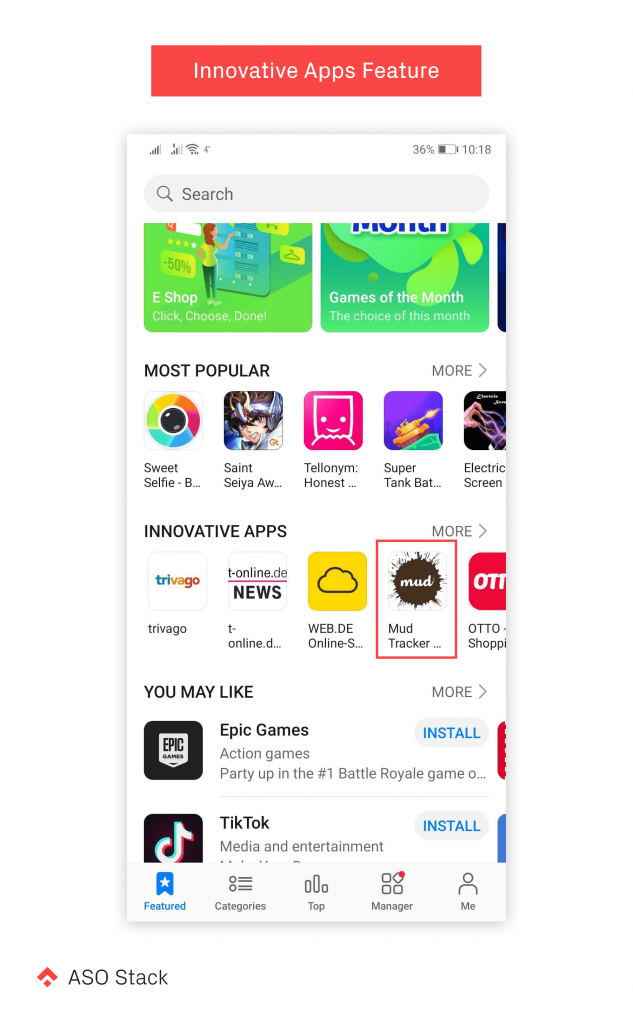
The AppGallery’s Featured tab also acts as the store’s home page
Google’s Play Store is unsurprisingly driven by its powerful search algorithm, lending more weight to an app’s Long Description than the App Store — which Apple isn’t indexing at all. On the flip side, Apple does index an app’s In-App Purchases and both Primary and Secondary Category names, which evidently are items Google doesn’t seem to care too much for. To better understand the AppGallery, we carried out a number of tests using our trusty Mud plant water reminder app and found some surprising results that may be useful for brands looking to gain access to Huawei’s reported 390 million global monthly active AppGallery users.
The latest with Huawei and the AppGallery
Since our last article, Huawei has confirmed rumors surrounding the company’s in-house developed operating system, HarmonyOS, and its ultimate destiny to replace Android on all Huawei devices at some point in the not-to-distant future. In the same presentation, it was also mentioned that Huawei plans on investing $1Bn in a program incentivizing developers to create apps for its new OS and subsequent release through the AppGallery, which comes pre-installed on all Huawei devices. With this in mind and the news that Huawei has already shipped 200 million units this year, let’s take a look at some strategies apps can employ to increase visibility within the AppGallery.
Keyword Optimization Cycle
Usually, when optimizing metadata in the App and Play stores we’d run through the Keyword Optimization Cycle, using search volume data to pinpoint high-value keywords that potentially bring in the most traffic. Unfortunately, no such metric or third-party service providing a workaround is available for the AppGallery so we have no reliable means of identifying high-volume keywords specific to Huawei’s store. In order to guesstimate whether a keyword brings in a lot of traffic one should start to look at what shows up in the auto-suggestions or use the Search Popularity score from Apple as a proxy.
The AppGallery describes their search algorithm as, “advanced machine learning algorithms to help find what you need in less time and with greater accuracy.” To find out what fields are indexed by their algorithm and work around the total lack of a keyword tracking tool we simply recorded our plant watering reminder app, Mud’s, rank for particular search terms and either added or removed them to the various metadata fields in updates. This enabled us to discover what’s indexed and whether or not it’s given more weight than other fields — opening up the possibility for keyword optimization within the store.
What is indexed in the AppGallery?
The AppGallery is similar to the App and Play stores when it comes to metadata fields, taking a little from here and a little from there. Here’s what you’ve got to work with:
Name
Your app name can be up to 64 characters long and cannot include any special characters and may not contain the names of other existing products or brands.
Brief Introduction
Sitting below your screenshots and still above the fold is your Brief Introduction of 80 characters.
Introduction
The first item below the fold is the Introduction with a whopping 8,000 characters (and no fewer than 100 characters).
Developer Name, Categories, and New Features.
There’s also your Developer Name, Categories (each with two sub-tiers), and a New Features field if you’re submitting a new version of your app.
Localizations
The AppGallery supports 78 different languages and storefronts in all major countries except the United States.
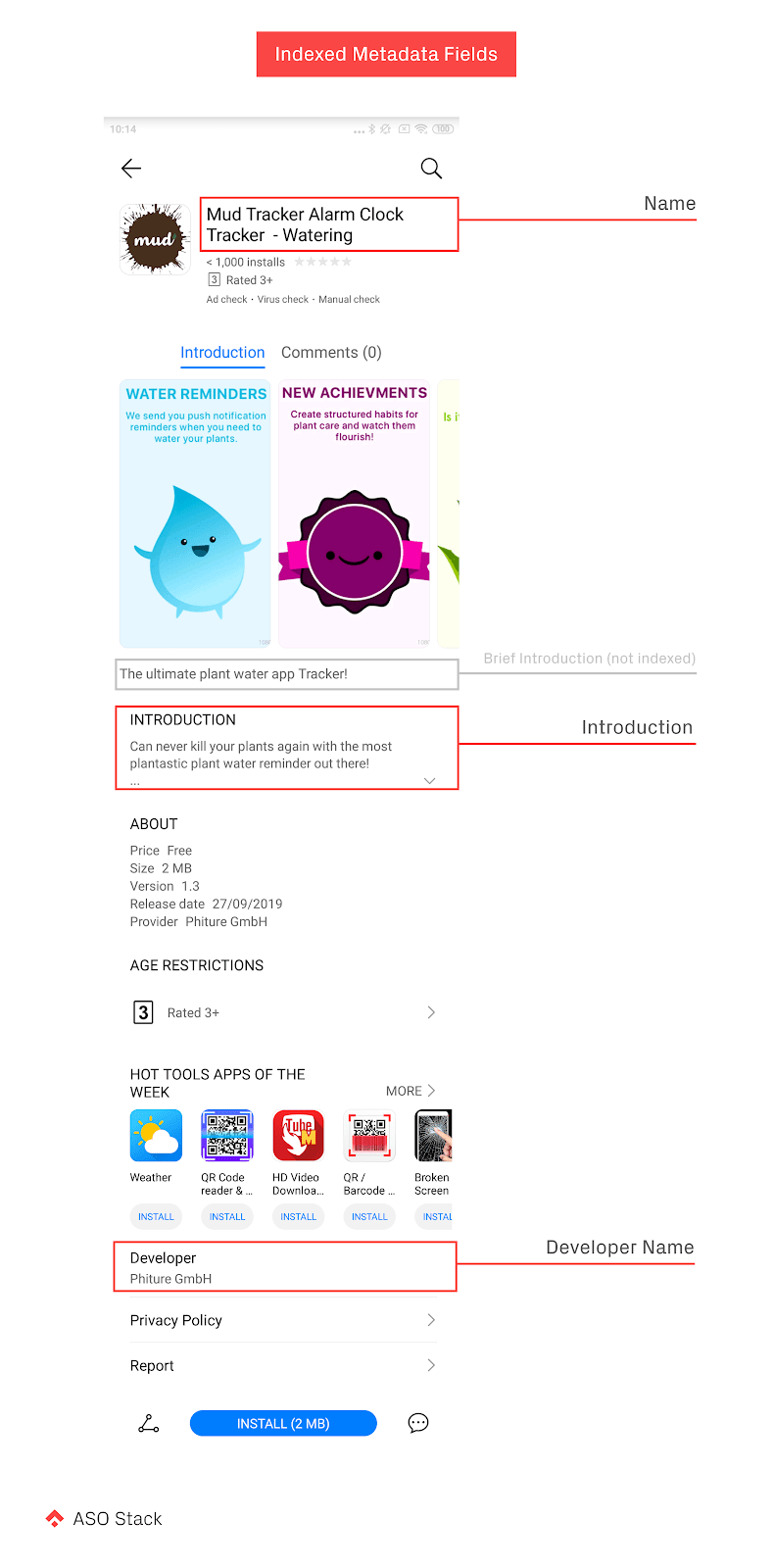
The AppGallery’s search bar sits at the top of most of the store’s pages and is accessible via a magnifying button on all other pages except the Gift Center, and a user’s profile page. After a search query, users will be fed a list of around 250 ranked apps that are relevant to their search terms and more importantly means the door is open for keyword optimization.
The Name of the game
When it comes to the ranking weight, the Name reigns supreme. Including the term Tracker in our Name took Mud from being previously unranked, straight into the top ten. Interestingly enough, in a further update, we added Tracker to the Name a second-time which moved Mud into the top five.
![]()
Ranking in the top five for the search term “tracker”
The Introduction and all its 8,000 glorious characters also impacted Mud’s ranking, helping us rank for unique keywords that we created ourselves. It enabled us to rank (albeit not well) for the fairly generic keyword “tea” by utilizing the vast character space with a myriad of references to tea time, afternoon tea, teacup, etc.
Sadly it doesn’t look like the same can be said for the Brief Introduction, which functions similarly to Google’s Short Description, as changes there seemed to make no impact on Mud’s rankings. One caveat we did learn however is that competitor keywords or at least the names of published apps can also be included in your Brief Introduction and make it through Huawei’s review system.
Whilst your Developer Name and Contact Details are indexed, you won’t gain any search rankings for keywords included in an update’s New Features. It also looks like you can rank for keywords combined from your Name and Introduction.
Moving forward, it would be interesting to explore the ranking possibilities of items in the Gift Center as well as the recently announced Quick Apps, which can be accessed through the AppGallery without being installed, a concept similar to Google Play Store’s Instant Apps. Although there is an interesting potential here to boost and compete for important keywords, the AppGallery only seems to be listing apps in its search results, whilst Quick Apps only exist in the Chinese market for the time being.
Furthermore, a deeper look into the connections between different localizations, similar to the US and MX storefronts in the App Store, would be worth checking out.
Conclusion
It comes as no surprise that an app’s name is the most valuable piece of metadata when it comes to search rankings with the AppGallery. Thankfully Huawei has given developers 64 characters to work with here, double that of their American counterparts, and have opened the door to more creative freedom for ASO efforts. Not stopping there, Huawei also offers double the persuasive power of an app’s description by allowing the use of 8,000 characters in an app’s Introduction. How the Introduction is indexed still remains a mystery but what we can say is that it does contribute to the app’s rankings and should be considered when optimizing metadata for the AppGallery.
Lastly, it’s worth reiterating the potential for black hat ASO. Huawei allowed the use of a fairly popular app globally to slip through the review process and end up in our Brief Introduction for one update. Although we don’t recommend the use of such vulnerable and unreliable tactics, it might actually be something your competitors are getting up to.
For more information about the Huawei AppGallery, please check out the other articles in our series and don’t forget to check back shortly as we take a look at what goes into being featured in the AppGallery.
Our Series on ASO for the Huawei AppGallery
- Huawei AppGallery ASO: Why Should We Care?
- Huawei App Gallery: An Introduction (this post)
- The Huawei Developer Console
- Search Visibility (this post)
- Getting Featured
- Discovering Apps via Categories and Other Explore Options
- Ads and Gift Centre
- Reaching your Major Markets: Localization
- Ratings & Reviews
- Conversion: Title, Short Description, and Long Description
- Conversion: Icon and Screenshots
- Featured Store Listing
- In-app Purchase
- Listing on AppGallery
- Tools & Metrics: 3rd Party Tools
- Recap: The Huawei ASO Stack









